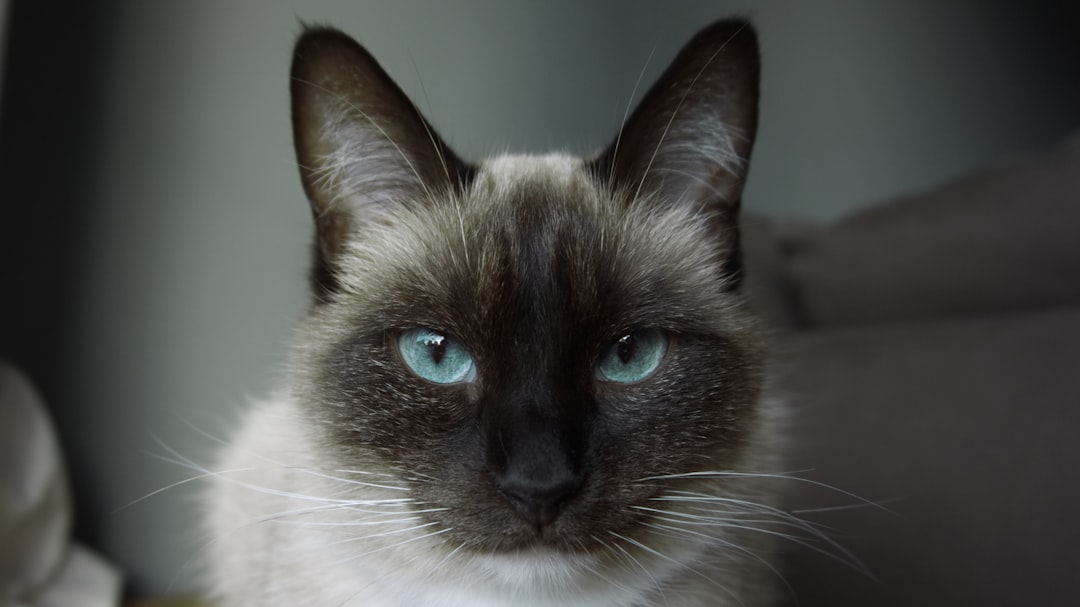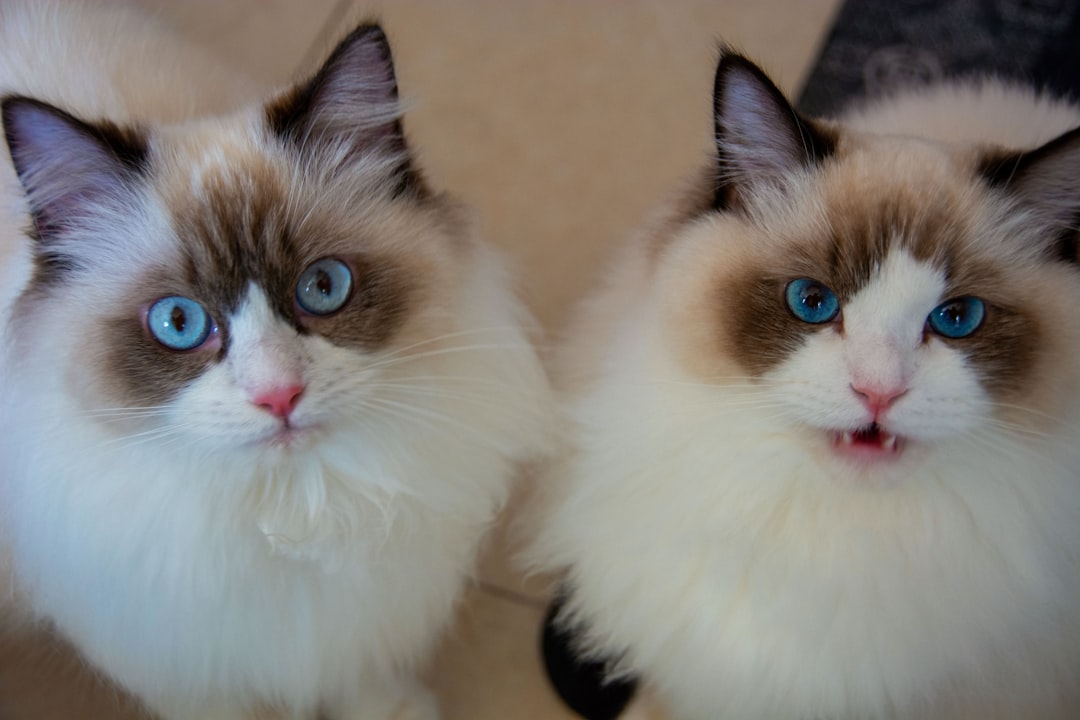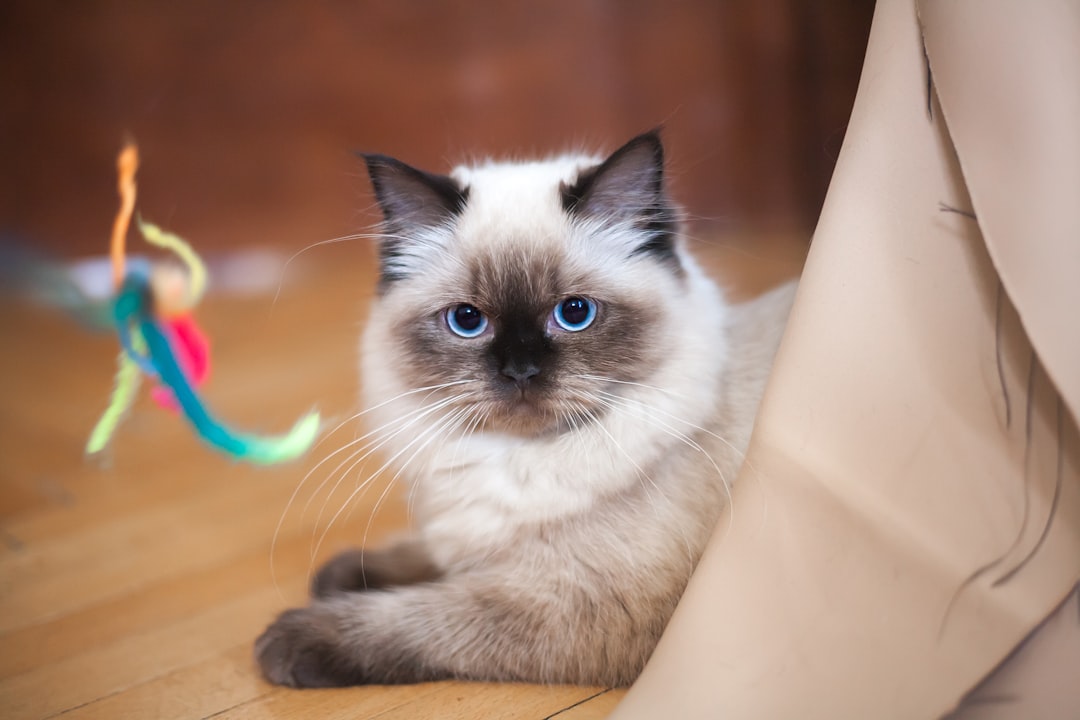Ever heard of a chimera cat? No, they’re not mythical creatures lurking in your backyard, plotting world domination! These delightful felines boast some seriously unique genetic tricks that make them unlike any other kitty on the block. Imagine a feline Picasso, splattered in vibrant colors and delightful patterns – that’s your chimera cat! Whether you’re considering adding one of these whiskered wonders to your family or just here to marvel at their quirks, you’re in for an amusing ride through the colorful world of chimeras. Let’s dive into the fur-ocious fun!
Introduction to the Chimera Cat

Welcome to the wild world of chimera cats, where genes throw a party and your normal feline friend suddenly has an identity crisis! So, what’s the story behind these pint-sized puzzles?
A chimera cat is like a furry magician who apparently fused together two different embryos into one. The result? A cat that can have not only different colors but literally different fur patterns on each side of its body! You could say they come with a built-in color palette—why settle for one?
- Two (or more) Colors: Think of a chocolate chip cookie with all the toppings—deliciously unpredictable!
- Unique Markings: One side could be calico, and the other a sleek tabby; it’s like an asymmetric fashion statement!
Now, imagine walking down the street with your chimera cat, and all heads turn! Get ready for the spotlight, because owning one of these beauty queens (or kings) means you’ve got a talking point everyone will want to discuss—preferably over a cup of cat-themed coffee!
Unique Genetic Characteristics

Ah, the chimera cat, a feline creation that could make even Dr. Frankenstein jealous! These cats earned their name from Greek mythology, but they don’t breathe fire (thankfully). Instead, they sport a unique genetic makeup that ends up being more magical than mythical.
Here’s what makes the chimera cat so interesting:
- Two-Toned Fur: You might think you’re seeing double! Some chimera cats flaunt a mix of colors and patterns. It’s like they had a wardrobe malfunction and decided to wear one side’s outfit while the other side chose something completely different!
- Distinct DNA: Each side of a chimera cat can contain different genetic information. Imagine your cat having a secret life on one side while being an angel on the other!
- Possible Gender Differences: Believe it or not, some chimera cats can actually have differing sex chromosomes. So, not only do they look like they’ve been through a color factory, but they can also challenge your basic understanding of gender!
In short, the chimera cat is a genetic masterpiece with a flair for fabulousness. You won’t find this level of variety at your local pet store – they’re an exclusive breed, and you’ll certainly be the talk of the town with such an extraordinary companion!
Physical Appearance and Variations

Chimera cats are nature’s fabulously puzzling masterpieces, and their appearances are as colorful as a painter’s palette. Let’s unravel this feline fractal of quirks and charms:
- Fur Color: These cats flaunt a dazzling mix of fur colors. You might spot one side with luxurious ginger fur, while the other boasts an enchanting gray. Basically, they’re like the ultimate fashion statement in the cat world—grabbing attention effortlessly!
- Facial Features: Often, a chimera cat sports a snazzy half-and-half face. One side might have a smirk like it knows a secret, while the other looks utterly bewildered. It’s the perfect conversation starter at any cat-themed party, don’t you think?
- Eye Color Magic: Some chimera cats even have mismatched eyes! Imagine having a peeper that’s a vivid green and another that’s a striking blue. They could moonlight as the star of a whimsical fairy tale.
In summary, if you’re looking for a cat who can literally wear two personalities, the chimera cat is your go-to choice! It’s like living with a feline superhero—no costume changes necessary!
Behavioral Traits of Chimera Cats
Ah, the chimera cat—not just a pretty face! If you think these feline marvels are merely a mix of colors, think again. They come packed with personality traits that rival any soap opera’s drama!
Here are some fun traits of the chimera cat:
- Dual Personalities: Like a cat version of Jekyll and Hyde, these cats can display different behaviors depending on their unique genetic makeup. So, you might get one sassy diva and a shy wallflower all in one furry package!
- Curiosity Level: Off the Charts: Expect your chimera cat to enact its own version of “National Geographic: Home Edition.” They’ll inspect every nook and cranny like it’s a covert mission!
- Social Butterflies: More companions than foes, chimera cats often enjoy social interactions, making them a hit at parties—just maybe not with the dog.
- Playful and Mischievous: Channeling their inner rockstar, these kitties aren’t shy about knocking things off counters or staging impromptu playdates with unsuspecting toes.
Before adopting a chimera cat, remember, you’re bringing home a personality, not just a pet! So buckle up for a wild ride of feline fun!
Health Considerations and Common Issues
When it comes to the chimera cat, staying healthy is no laughing matter! But that doesn’t mean we can’t have a little fun while discussing it. So, let’s dive into some vital health considerations along with a few quirks of these fascinating feline hybrids!
Common Issues to Watch Out For:
- Genetic Problems: Due to their unique genetic makeup, chimera cats can occasionally experience issues common in purebreds. Think of it as a mixed breed with a twist of fate!
- Heart Conditions: They might have a flair for drama, but don’t let that fool you—some may develop heart problems. Regular check-ups are essential!
- Dental Dilemmas: Those pearly whites deserve attention! Dental disease can sneak up, so ensure you keep those teeth squeaky clean.
Quick Comparison of Health Aspects:
| Aspect | Chimera Cat | Regular Cats |
|---|---|---|
| Heart Health | Moderately prone | Generally healthy |
| Genetic Disorders | Yes | Less common |
| Dental Issues | Higher risk | Standard care |
Ultimately, keeping a close eye on your chimera cat’s health ensures they stay playful, purring, and as fabulous as they are! So, let’s pamper these gemlike cats while we monitor their well-being.
Diet and Nutrition for Chimera Cats
Feeding your chimera cat requires as much planning as making a five-course meal for a food critic—only furrier and with more meowing. Here’s how you can keep your uniquely charming chimera cat happy and healthy:
- High-Quality Protein: Choose cat food that highlights meat as the first ingredient—think chicken, turkey, or delightful fish. After all, your chimera cat deserves a gourmet feast!
- Balanced Diet: Don’t forget the variety! Mix in some veggies (think carrots and peas) for fiber. Just keep those onions and garlic away; they’re cat no-no’s.
- Hydration is Key: Always provide fresh water, because even whimsical chimera cats need to quench their thirst after all that prancing around!
Comparison of Diet Types for Chimera Cats:
| Diet Type | Pros | Cons |
|---|---|---|
| Dry Food | Convenient, great for dental health | Less moisture content |
| Wet Food | High moisture, tasty for cats | Can be pricier |
| Raw Food | Closest to natural diet | Handling and prep time |
Ultimately, whether your chimera cat prefers kibble or a fancy pâté, keep an eye on their weight and coat to ensure they’re shining like the stars of the feline world!
Understanding Legal and Ethical Aspects
When it comes to owning a chimera cat, you might want to double-check your local rules—you know, before you mistakenly turn your living room into a cat circus! Here’s what you need to keep in mind:
- Breeding Regulations: Some areas have strict regulations about breeding exotic or mixed-breed cats. A chimera cat, being a feline two-for-one special, may fall under these rules. Make sure you’re not causing a feline fiasco!
- Adoption Protocols: While adopting is always a good idea, some rescue organizations need to ensure your heart can handle that much cuteness! Some might require a pre-approval process to take home a chimera cat.
- Ethical Considerations: Remember, it’s not just about looks! Owning a chimera cat means you’re responsible for more than just their stunning appearance. Be ready for commitment and love those quirky personalities that come with them!
In summary, owning a chimera cat isn’t just a walk in the park; it comes with its own set of guidelines—make sure you’re ready for the purr-sonal responsibility!
Understanding Legal and Ethical Aspects
Let’s dive into the not-so-glamorous but oh-so-important world of legal and ethical considerations for our fabulous chimera cats. Spoiler alert: they’re not just pretty faces; there’s a legal side to owning one of these genetic wonders!
- Legality: In many regions, owning a chimera cat is legal, but always check local regulations. You don’t want a disgruntled neighbor knocking on your door because you have a cat that looks like two in one!
- Ethical Breeding: If you’re considering adopting (because who wants a cat with commitment issues?), opt for a reputable breeder who prioritizes the health and well-being of their cats. Ethical breeders should be proud to show off their kitty family tree—just like your quirky Uncle Larry at family reunions!
- Awareness: Many people may not understand the unique genetic makeup of a chimera cat. Be ready to be a cat ambassador! Share fun facts with friends and family, like, “Did you know I have a cat that can flaunt two different colors? It’s like owning a walking palette!”
In conclusion, while owning a chimera cat comes with a dash of legal and ethical responsibilities, the joy they bring to your home offsets it all—unless, of course, they take over your favorite chair!
Frequently Asked Questions
What is a Chimera Cat and how do I know if I have one?
A Chimera Cat is like the unicorn of the feline world, sporting two different color fur patterns, like having a tuxedo wearing a hula skirt! To determine if you have one, check if your cat has two distinct patterns on its face or body – think of a 50/50 pizza sliced perfectly, but with more paws and less pepperoni! If you notice your cat has both a wild calico coat and a dapper black suit, congratulations! You are now the proud parent of a rare, multi-faceted kitty!
Do Chimera Cats have special care needs?
Well, wouldn’t you think a Chimera Cat would have needs as unique as their stylish fur? While they don’t require a spa day every week (although who wouldn’t enjoy that?), they do love attention just like your favorite celebrity! Make sure they get plenty of playtime, a healthy diet to support their ‘model’ looks, and keep an eye on their health – after all, a Chimera Cat should be as fabulous on the inside as they are on the outside!
Can all cats be Chimeras or is it exclusive?
Oh, no, no! Your average tabby can’t just pop out a Chimera look, it’s like saying all apples can be transformed into a gourmet pie – only a select few can reach that level of deliciousness! Chimera Cats are a phenomenon resulting from a unique genetic occurrence during embryo development, where two embryos fuse. So while all cats are great in their own furry way, only a sprinkle of them have the special flair of being a Chimera! Keep looking for that double-patterned pizza!
Are Chimera Cats more likely to have health issues?
Not necessarily! It’s like asking if a kid with two different delicious ice cream cones has a greater chance of a tummy ache. While some may worry that Chimera Cats might inherit extra quirks, the good news is most are just as healthy as other kitty pals! Regular vet check-ups and balanced meals are the best way to ensure your cat remains as happy and healthy as a kitty can be, regardless of their fabulous fur patterns!



